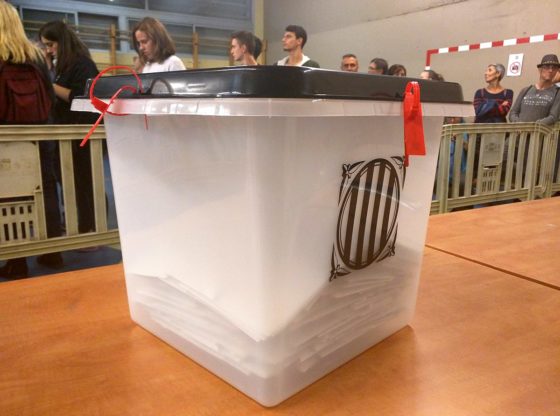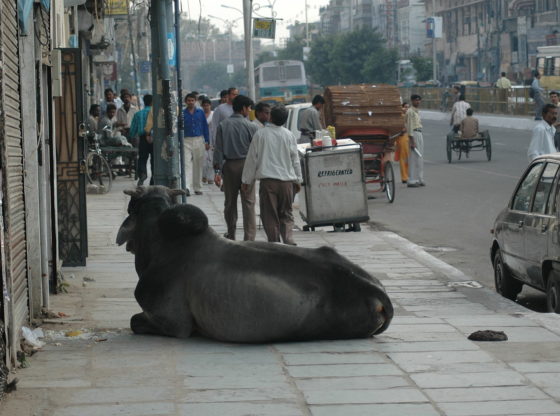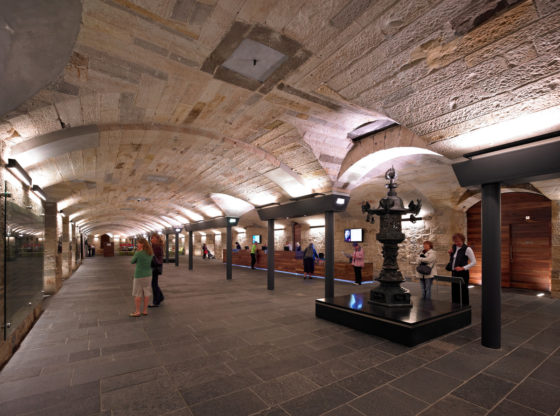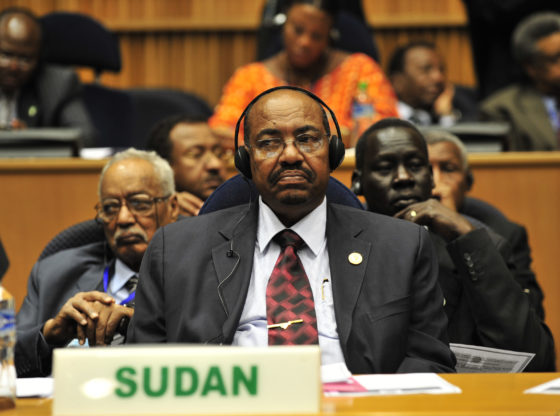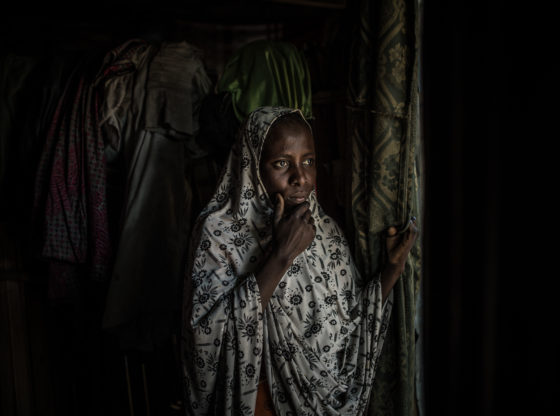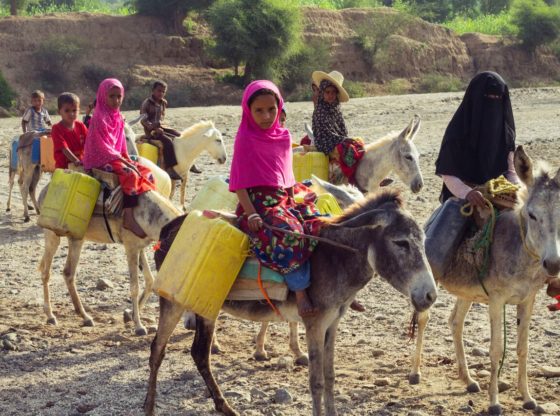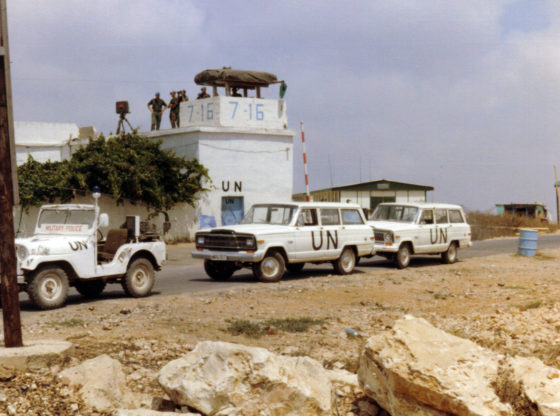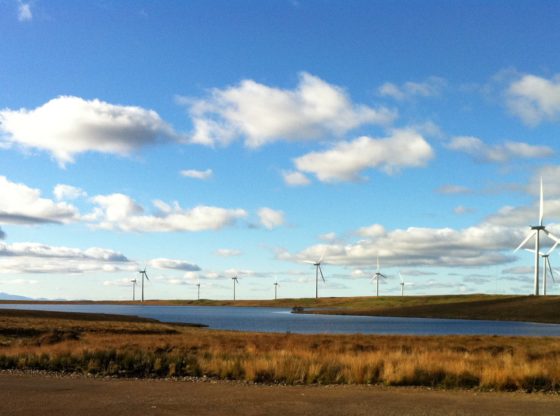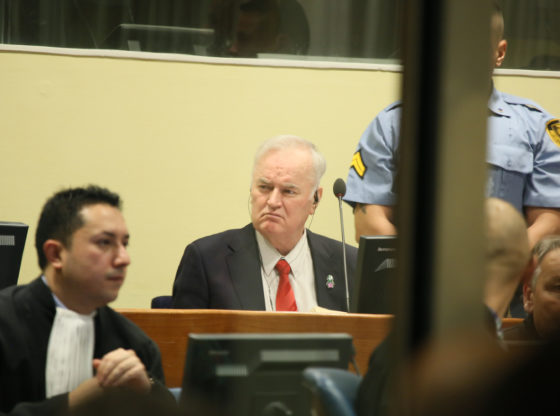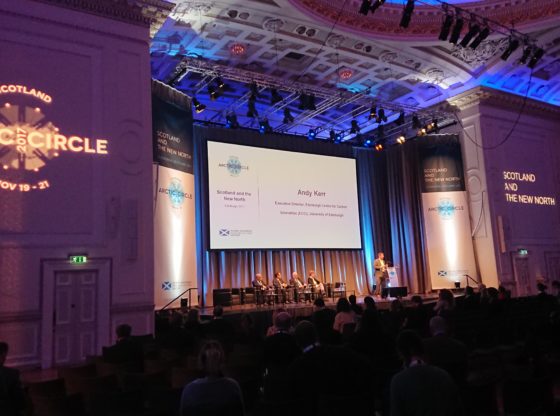They have not been collaborating for very long but cartoonists Nicholas Leonard and Helen Cochrane have quickly seen a demand for their work from publications such as the Financial Times and the website politicalbetting.com. Here, they answer CABLE’s questions about cartoons, about their own work, and about how the tumultuous events of the past year have influenced it.
Q: How did you first begin working together?
NL: I started devising cartoons back in the twentieth century when I was working on a student newspaper. I can’t draw anything beyond curtains and the occasional conclusion. But I’ve been fortunate over the years to work with some very talented artists. As the end of 2016 approached, I decided that my New Year’s resolution would be to do something more in my retirement than watching the next twelve months turn inexorably into another year.
I contacted the Line Gallery in Linlithgow and asked them if they knew any artists who might be interested in working with a words-only person. They put me in touch with Helen Cochrane. Since then, we’ve been doing a variety of cartoons for various and publications and websites.
HC: After graduating at the relatively young age of 49, I received a phone call from Nicholas which set me on the course of creating cartoons. The timing was perfect. I think our collaboration has well and truly set sail after what has been a perfect storm for editorial cartoons.
Q: Why are cartoons important?
NL: The word ‘cartoon’ covers a very wide range of pictorial material – from saucy seaside postcards to the sophisticated films of Pixar and Disney. There is a long and honourable history in Britain of political cartoons lampooning the great and the not so good. The cruel, insightful wit of master artists like George Cruikshank, James Gillray, and William Hogarth still has the power to shock people today. They were in the direct tradition of the court jesters, the licensed ‘fools’, given freedom by monarchs like Henry the Eighth to defuse potential opposition with mockery that always fell short of calls for actual revolution.
We take it for granted in Britain that present-day exponents of merciless political cartoons have complete freedom to draw and say what they want without any hindrance beyond the laws of libel. In many other countries, there’s no such freedom and the lives of their citizens are diminished as a result.
I don’t think it’s pretentious to say that cartoons can play an important role in helping people to cope with the pressures of being a human being. It’s no accident that in the ads on any dating site, one of the most desired attributes is ‘gsoh’.
“Cartoons now appear to be the voice of choice, whether they are Horatian or Juvenalian in nature. They can be a temporary release valve for untempered souls looking to get their point across and hit the networking jugular.”
HC: There have always been hyperbolic characters throughout history whio have played into the artistic hands of the editorial cartoonists. I think the internet has also had a hand in the resuscitation of this art form. People want to shout their opinions. They feel aggrieved, unheard and angry - and boy do they want you to know. But the world is too unkind, harsh, and unforgiving at this moment, and the jokey gifs just don’t cut it anymore.
Cartoons now appear to be the voice of choice, whether they are Horatian or Juvenalian in nature. They can be a temporary release valve for untempered souls looking to get their point across and hit the networking jugular.
Q: Has 2017 been a godsend for cartoonists?
NL: This has been an extraordinary year in politics. There have been numerous occasions when I’ve wondered whether we’ve somehow been transported into an alternative universe run by an artificial intelligence algorithm with a cruel sense of humour and irony. The tweets from Donald Trump have been like a modern version of the ancient Greek chorus, underlining the bizarre reality of a world in which an American President takes the word of a Russian leader rather than his own intelligence chiefs.
The repercussions of the Brexit referendum result, the escalating nuclear threat from North Korea, the appalling human tragedies and violence of the refugee crisis, the continued vicious fighting in Afghanistan, Iraq and Syria, the growth in random horrific terrorist attacks, and the morphing of cars and lorries into weapons for human killing all create a background for cartoonists which is both creatively rich and morally challenging.
The best cartoons use visual and verbal wit and insight to do more than simply make people laugh. They should provide people with some mental sustenance to help them cope with the demands of being human.
“The best cartoons use visual and verbal wit and insight to do more than simply make people laugh. They should provide people with some mental sustenance to help them cope with the demands of being human.”
HC: In 2004, the Pulitzer Prize winning cartoonist, Patrick Oliphant, warned that the political cartoon, the ‘once-potent galvanizer of opinion, the kick-starter of conversation and discussion, has been allowed to atrophy from disuse, and is, after several centuries of successful use as a castigator and common scold of the body politic, in great jeopardy of fading away altogether.’
In 2017 that diagnostic impression could be changed to a healthier one – thanks in no small part to President Trump and Kim Jong-Un’s enthusiastic interventions into world affairs.
Q: Do you think that the events of 2017 have provided you with more work?
NL: There are already numerous publications which use cartoons. I don’t think there has been an increase directly related to world events. The most important factors have been the continued growth of the internet, and the rising terrorist threat to politically controversial cartoonists, as so tragically evidenced in the case of Charlie Hebdo in France.
“For me, 2017 has been monumental in showcasing cruelty, ignorance and selfishness. I think I’ll remember 2017 as the ‘slack-jawed’ year.”
HC: I’m not so sure about more work. But there’s certainly more to work with. In historical terms, every year in my fifty years has brought international political events which makes us ponder humanity’s ability to govern itself. But for me, 2017 has been monumental in showcasing cruelty, ignorance and selfishness. I think I’ll remember 2017 as the ‘slack-jawed’ year. I still consider Scotland to be the best democratic example. Nothing jingoistic about it: but we’re probably the best out of a bad lot.
Q: Is there any topic that is morally ambiguous for a political cartoonist to address? Take the North Korean crisis: how does a cartoonist approach something as serious as a possible nuclear confrontation?
NL: I’m not sure what you mean by ‘morally ambiguous’. All morality is situational and subjective, and all too often it consists of trying to identifying the lesser of several evils. I can see there could be difficulties of moral ambiguity (and certainly dissent) on controversial issues such as race, gender, abortion, religion and education. But the mandate of a cartoonist is to find a crisp constructive way of looking at these matters so as to affirm the common shared interests of the human race.
I keep reminding myself, when confronted with unsatisfactory human beings, that not a single person on the planet actually asked to be born. As for cartoons on nuclear confrontation, the human race would not be worth saving if we cannot find a way of contemplating our own mortality, and finding a way to get at least a chuckle out of it. I am sustained by the thought of Mark Twain who famously said that for billions of years before his birth he didn’t exist “and do you know, it never caused me the slightest inconvenience.” I like also to think of Voltaire, a renowned atheist, who was urged on his deathbed to renounce Satan - “Come, come”, he said, “this is no time to be making new enemies.”
“As for cartoons on nuclear confrontation, the human race would not be worth saving if we cannot find a way of contemplating our own mortality, and finding a way to get at least a chuckle out of it.”
HC: In their wee North Korea bubble, it probably seems that the we are ganging up on them and that they’re simply trying to protect themselves from us baddies who want to annihilate them. That’s probably the diatribe that’s being force-fed to the common man and woman in North Korea. Now, go back and read those last two sentences – but this time replace North Korea with ‘the Free World’.
North Korea, just like the ‘free world’, is full of hopeful, loving, creative people who just want a safe, nurturing, friendly, caring place to live. The only difference is that they don’t get to choose who has the nuclear codes. How does a cartoonist approach a nuclear confrontation? By putting pen to paper and kissing their arse goodbye!
With thanks to Helen Cochrane and Nicholas Leonard.
Find Helen Cochrane on Facebook at: https://www.facebook.com/pg/HelenCochraneArtist/photos/?tab=album&album_id=827452100767516
Find her on Twitter at: @HCochraneArtist

